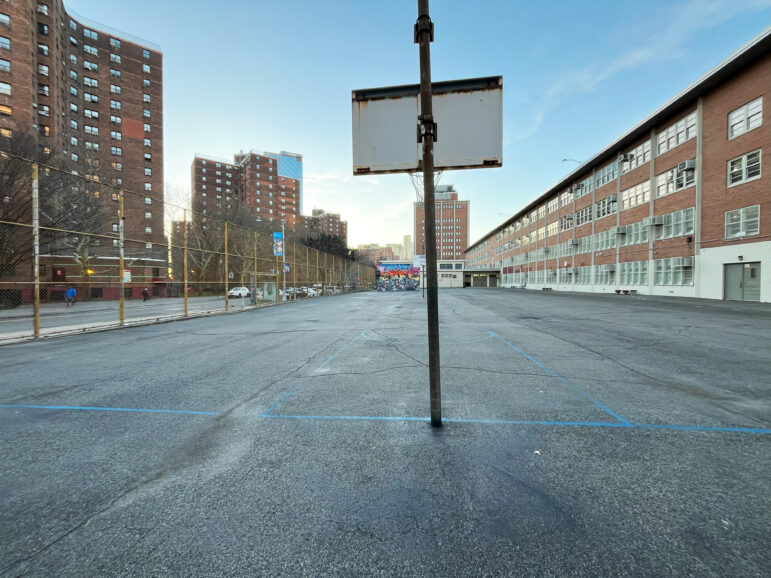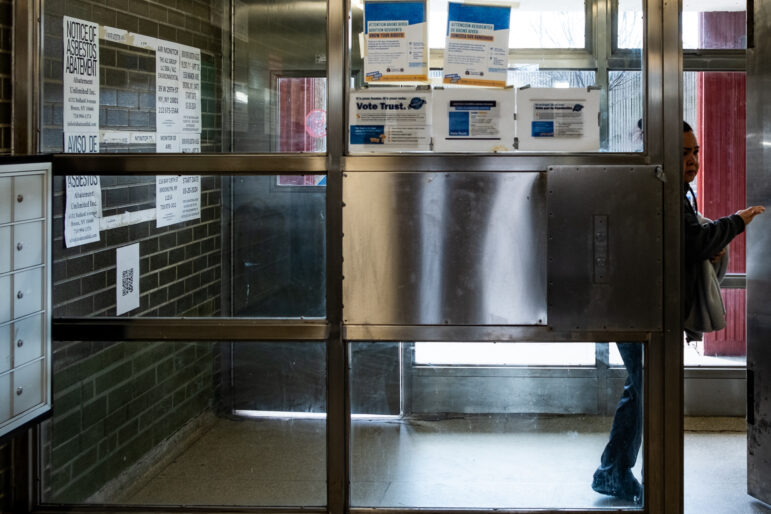
William Alatriste for the NYC Council
Public Housing Committee Chairman Ritchie Torres has raised questions about the city’s tendency to treat NYCHA as separate from other affordable housing programs.
On Thursday, the public housing authority celebrated the one-year anniversary of Next Generation NYCHA, its ten-year plan to achieve financial stability, with a bit of good news: it had achieved an unexpected operating surplus of $8 million in the first quarter of 2016, as opposed to the $15 million deficit projected several months ago.
The housing authority suffers an ongoing fiscal crisis due to underfunding by the federal government and rising utility and fringe benefit costs. In March, City Limits reported that implementation of the plan was off to a shaky start: NYCHA had increased its expected deficit for 2016 from $25 million to $60 million, largely due to decreased projections of revenue and savings from strategies within the plan.
But at a City Council hearing on Thursday, NYCHA announced they expected to “close the deficit” with lower than expected expenses.
“In just one year, we’re seeing some very promising results,” said Chair and CEO of the authority Shola Olatoye. “I’m pleased to report NYCHA now anticipates a more positive 2016 outlook.”
The first quarter surplus is partly the result of an unexpected increase in federal funding: while last year HUD gave NYCHA 98 percent of the section 8 subsidy due to the authority according to a formula, this year the feds provided 99.5 percent of that owed funding.
In addition, several of the authority’s Next Generation strategies were more successful than expected. Using robocall rent reminders and a new mobile rent payment program, the authority succeeded in increasing rent revenue, collecting $7 million more than projected under the plan during the first quarter.
In addition, while a few months ago the authority down-revised projected saving from headcount reductions, NYCHA now anticipates exceeding the plan’s goals for 2016 after reducing headcount by 101 more positions than expected during the first quarter. (NYCHA, however, still predicts fewer savings from headcount in future years than originally predicted in its ten-year plan.)
But there’s no telling if the good news will last: NYCHA officials said they expected reductions in federal revenue later this year. On the other hand, officials said they are moving quicker than expected on efforts to convert a public housing complex in the Rockaways into a project-based Section 8 development through HUD’s Rental Assistance Demonstration (RAD) program, which will bring in an additional $22 million in revenue this year.
Though Olatoye was in good spirits about NYCHA’s finances, chair of the public housing committee Ritchie Torres once again expressed his ire with the de Blasio administration for not making public housing more of a budget priority. This spring, City Council called on De Blasio to dedicate an additional $310 million in capital funds for structural repairs, as well as increase the city’s allocation to NYCHA for a variety of initiatives, including baseline funding for senior centers, expanded security enhancements and youth employment slots, and an additional 1,000 homeless placements. A press release from Torres’s office complains, however, “The Fiscal 2017 Executive Budget only partially addresses one of these requests by providing funding in Fiscal 2017 for the operation of NYCHA managed senior centers” as well as an additional $26.8 million in capital funds.
At the hearing, Torres added that the mayor ought to count public housing units in the RAD program among the 120,000 “preserved” units in the mayor’s housing plan to ensure their rehabilitation is one of the city’s policy priorities.
“I resent what I see as the marginalization of NYCHA within the mayor’s housing plan,” he said.
In other news, the Council was eager to discuss the details of NYCHA’s contract with three developers to build affordable housing on the land of three NYCHA developments as part of the city’s Next Generation Neighborhoods plan (commonly known as infill development). Olatoye explained that the developers would collectively pay NYCHA a small lump sum payment which would most likely be invested back into NYCHA’s larger budget, with possibly a set-aside for small projects at the three selected sites. Councilmember Laurie Cumbo said she was disappointed in the lack of minority developers selected for the program and hoped to see “new faces as part of the development process” going forward. Olatoye said the authority was continuing its efforts to educate an array of developers about how to craft a successful application.
Torres and Olatoye also discussed their mutual concerns with a new HUD policy that would set voucher rent limits by ZIP code rather than by metro area, which would decrease the amount of Section 8 subsidy provided in low-income ZIP odes. The policy seeks to encourage economic integration by shifting Section 8 vouchers holders to higher income neighborhoods, but Torres and Olatoye shared fears it would rattle landlords, making it harder for apartment seekers to find landlords willing to accept the voucher, while forcing voucher users in low-income ZIP codes to pay a greater share of their income on rent.
“You are absolutely right in terms of the potential devastating impact that this could have,” Olatoye told Torres.








